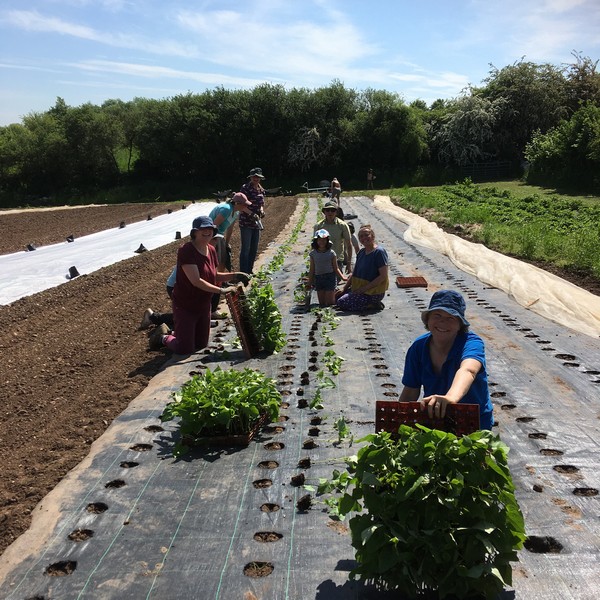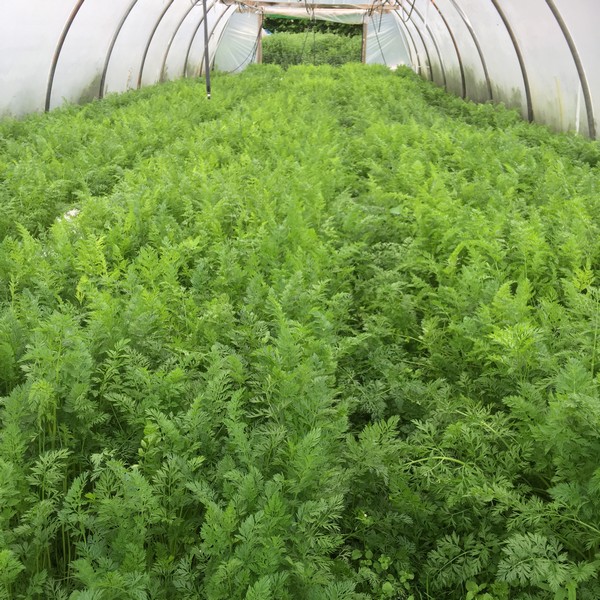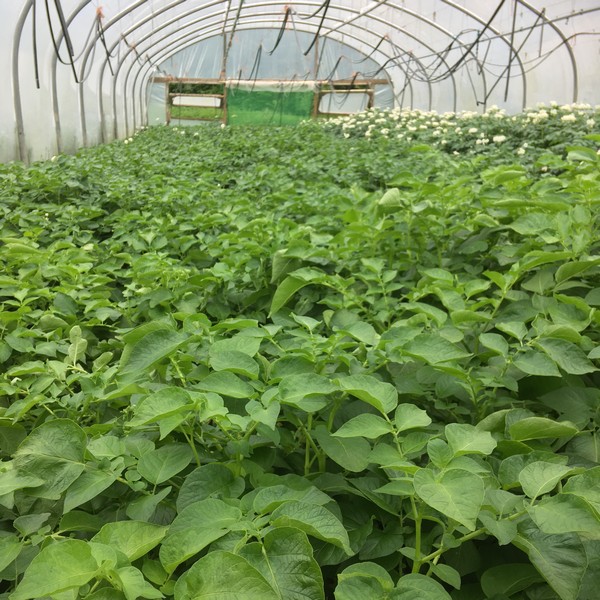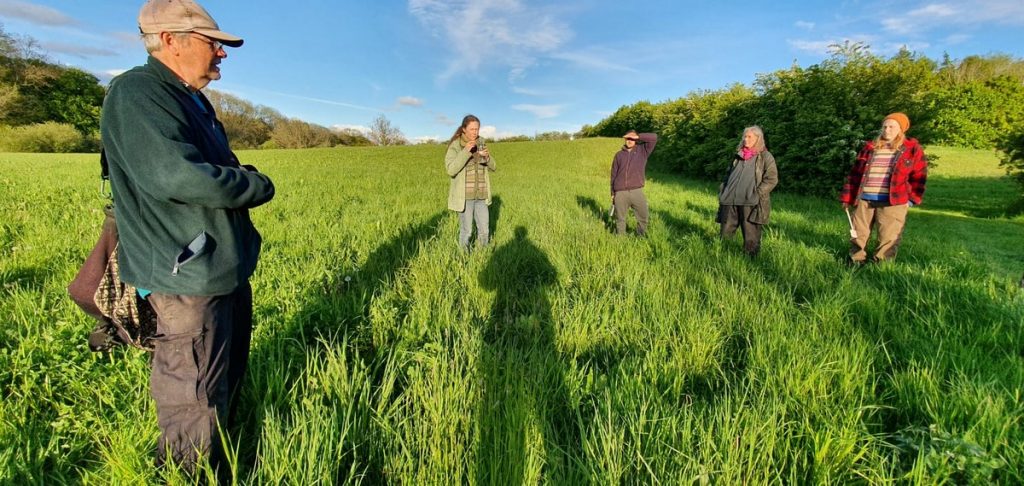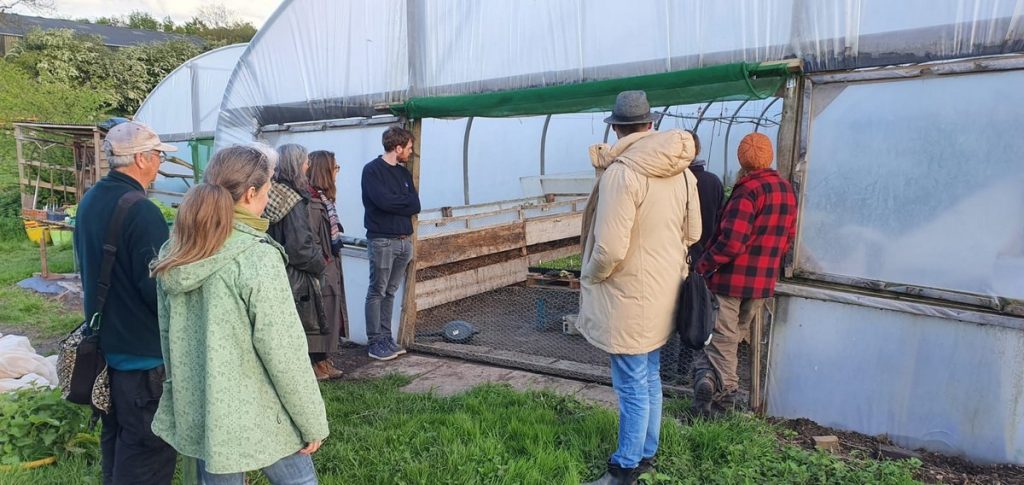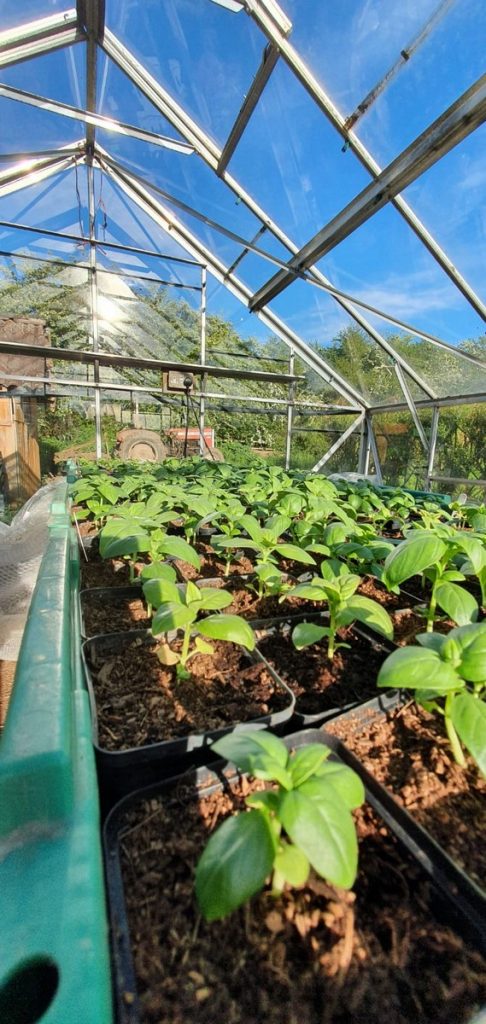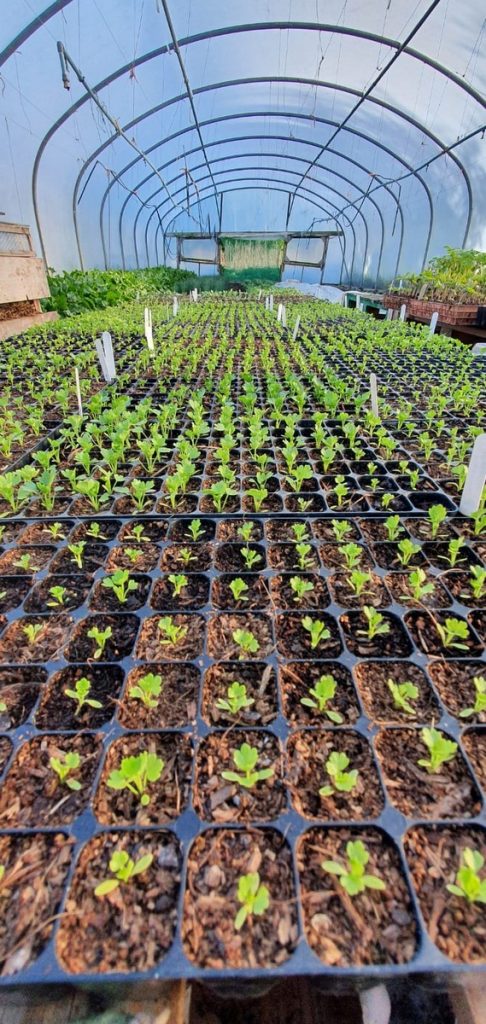Rebecca’s Recipe of the Week: Peckham Salad
This salad is in honour of my younger son Isaac, who has moved to Peckham, home of Sally Butcher’s wonderful restaurant Persepolis. The recipe is adapted from Butcher’s 2011 Veggiestan. The combination of crispy, raw carrot and sweet, roasted beetroot works well with the orangey balsamic dressing. The original recipe includes several sweet potatoes alongside the beetroot. If you’d like to include these, peel and boil for about 15 minutes, and then toss with the other ingredients.
Beetroot and Orange Salad
serves 4 as a side dish
Ingredients
Salad
2 large beetroots
1 large carrot, peeled and grated
1 big handful of parsley, coarsely chopped (you can use all parsley or all mint if you prefer)
1 big handful of mint leaves, coarsely chopped (you can use all parsley or all mint if you prefer)
Dressing
zest and juice of 1 large orange
2cm of ginger, peeled and grated
½ teaspoon ground cumin
¼ teaspoon ground cinnamon
4 tablespoons olive oil
1 teaspoon orange flower water
2 teaspoons balsamic vinegar
salt and pepper
Preparation
Preheat the oven to 200C. Place the whole beetroot in the oven and roast for between 45 and 90 minutes, or until it is soft when poked with a fork. Remove and let cool.
While the beetroot roasts, prepare the dressing: put all the ingredients into a jar and shake vigorously until well mixed. Don’t forget to zest the orange before you cut it in half to juice it!
Once the beetroot is cool enough to handle, peel it and cut into 1.5cm cubes. Combine it with the grated carrot and chopped herbs, and then pour the dressing over and toss.
Recipe adapted from Sally Butcher, Veggiestan (2011).
Ali’s Recipe of the Week: Waste Not Want Not Pesto
With new season carrots appearing in the share for the first time this week, there’s an opportunity for an interesting way to use the fronds, saving them from the compost heap. Carrots tops have a grassy, parsley-like flavour that makes them ideal for blitzing into a quick and simple pesto. It’s sensational served with roasted carrots, spread on toast, tossed through pasta or stirred with a few glugs of olive oil to make a delicious salad dressing.
Carrot top pesto
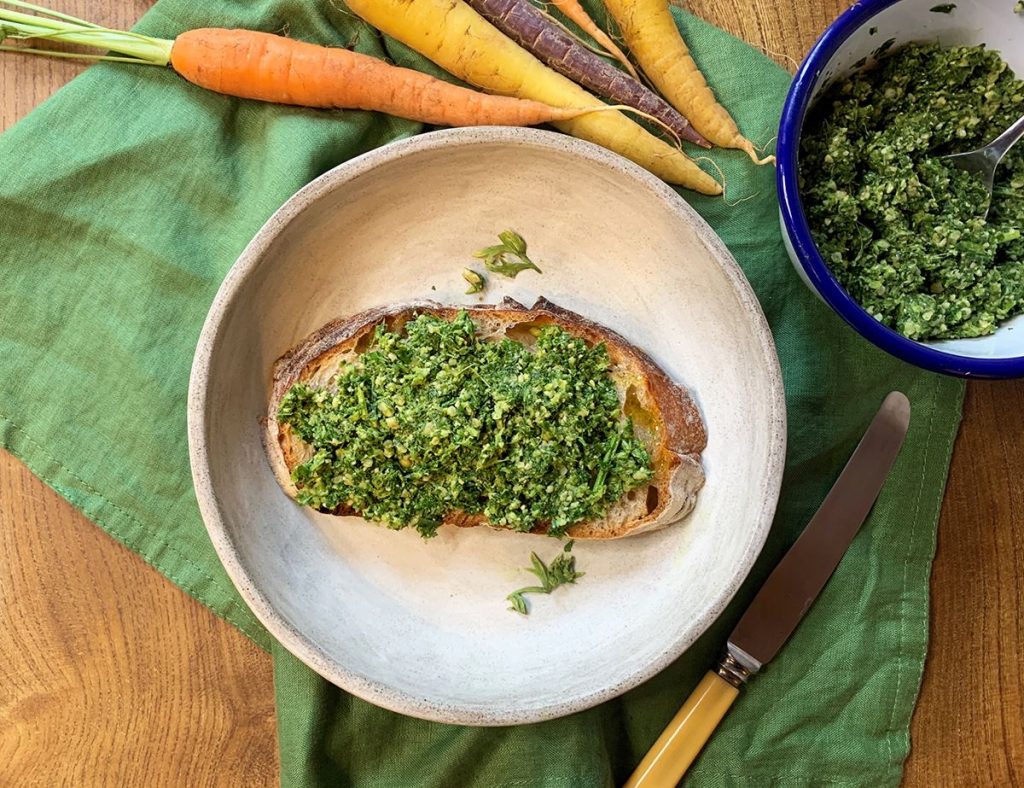
Ingredients
Bunch of carrots (tops only) – for best results discard any tougher larger stems and just use the feathery ones
½ lemon, juice only
1 garlic clove, peeled
75g cashews, walnuts or almonds
3 tbsp olive oil
Sea salt
Freshly ground pepper
Handful of grated Parmesan (optional)
Prep: 10 mins
Method
1.Trim the carrot tops off the carrots and thoroughly wash the tops to get rid of any dirt. Roughly chop them.
2.Pop the carrot tops into a food processor and add the other ingredients. Whizz till you have a coarse paste. Taste and add more salt or pepper if you think the pesto needs it. Loosen with a little more olive oil or a splash of water if needed.
3.Herb is the word: add a handful of fresh herbs to the mix, if you like. Parsley, mint, oregano and basil would all make excellent additions.
Adapted from: https://www.abelandcole.co.uk/recipes/carrot-top-pesto
Rob’s Recipe of the Week: Broad bean pasta
This recipe was a discovery late last summer and ended up being our go-to for broad beans. I’ve had it in the side-lines ever since and now broad beans are finally back, it’s time to share! This recipe was even a hit during a solid week of rain under canvas in the Lakes.
Spaghetti with broad bean pesto
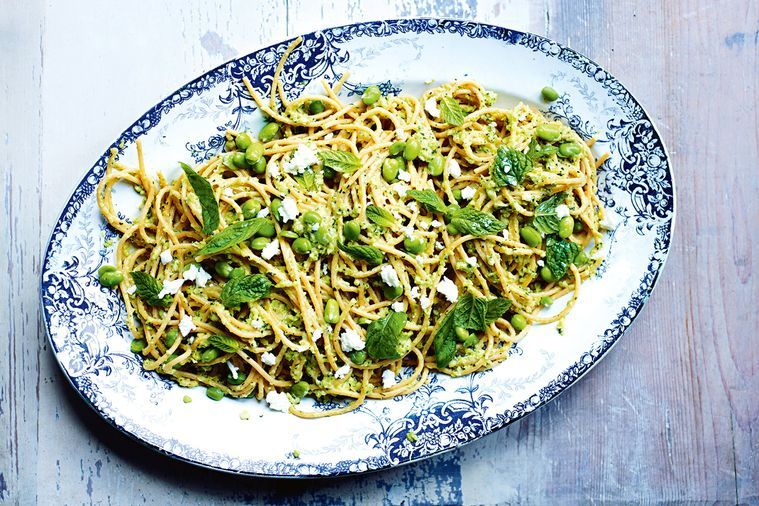
INGREDIENTS
500g dried spaghetti
500g broad beans, blanched, skins removed
1 small garlic clove
1/2 bunch mint, leaves picked, plus extra to serve
Juice of 1/2 a lemon
1/4 tsp cayenne pepper
2 tbs extra virgin olive oil
30g feta, plus extra to serve
METHOD
- Cook pasta in a pan of boiling salted water according to packet instructions until al dente. Drain, reserving a little cooking liquid.
- Whiz 200g beans in a food processor with the garlic, mint, lemon juice and cayenne. Add oil and feta, and pulse to combine (loosen with a splash of the cooking liquid, if necessary). Season.
- Working quickly, toss the drained pasta and the broad bean pesto together on a serving dish. Sprinkle with the extra mint and feta, then top with remaining beans. Serve immediately.
Recipe adapted from: https://www.delicious.com.au/recipes/spaghetti-broad-bean-pesto/Meqkhuj6
Rebecca’s Recipe of the Week: Spring Onion Dipping Sauce
Mark Bittman, whose recipe this is, writes ‘occasionally, I stumble over a culinary combination so obvious that I don’t know whether to marvel over the bad luck that has kept it from me until now or the good luck that finally brought it my way’. As recipes go, this is incredibly easy—ginger mixed with chopped spring onions, oil and salt—but it is extremely versatile. Use it as a dipping sauce for steamed chicken breast: drizzle the cooked chicken with soya sauce and sesame oil and serve with rice and this sauce. You can also stir it into plain rice or noodles, or you can eat it with steamed fish or fried tofu.
Spring onion dipping sauce
serves 4
Ingredients
4 tablespoons sunflower oil or other light vegetable oil
4 tablespoons chopped spring onions (green and white parts combined)
1 tablespoon peeled and grated ginger
½ teaspoon salt, or more, to taste
Preparation
Combine the ingredients in a bowl. Taste it, and add more salt, ginger or spring onions if you like. Spoon over steamed chicken breast or in any of the other ways described above.
Recipe adapted from Mark Bittman, The Minimalist Cooks Dinner (2001).
Rob’s Recipe of the Week: Super beet salad
This week we’re getting beet tops. These are another little known highly nutritious gem that Canalside provides for us. Google tells me 1 cup of boiled tops provides 774% of your daily recommended vitamin K! (And less impressively, 48% of vitamin C and 15% calcium & iron). But there’s no point in something being healthy unless it’s good to eat too – hopefully this recipes will help with that.
Spicy chickpea and roasted beet salad with beet tops
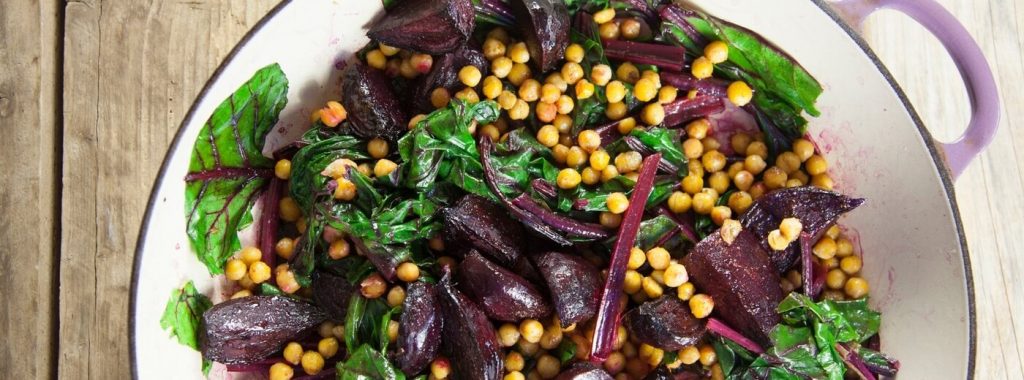
Ingredients:
1 bunch beetroot, with leaves
olive oil
400g tin chickpeas, rinsed and drained
½ tsp ground cumin
½ tsp ground coriander
¼ tsp chilli powder
lemon juice
salt and pepper
Method:
Preheat oven to 200°C/Gas 6.
Cut the leaves from the beetroot. Trim, wash and peel. Cut the beetroot stems into short lengths and wash them and the leaves, then leave to drain.
Cut the beetroot into wedges and toss in just enough oil to coat. Season.
Pat the chickpeas dry with kitchen paper. Toss on another baking tray with just enough oil to coat.
Put the beetroot in the oven for about 30 minutes until tender. After the beetroot has been in the oven for 10 minutes, add the chickpeas.
Remove both from the oven and toss the chickpeas in the spices.
Heat a little oil in a large frying pan. Add the beetroot stems and fry for a minute or two. Add the leaves and stir to wilt.
Add a good squeeze of lemon, toss in the beetroot and chickpeas and stir. Check the seasoning before serving.
From: https://www.riverford.co.uk/recipes/spicy-chickpeas-with-roasted-beets
2021: June news – A Month Behind
It’s been lovely to work in the sunshine this week and it has certainly given the crop growth a good surge. Here’s hoping for showers to balance it out and make our field irrigation easier.
As you’ll see when you collect your share, we have really entered the ‘harvesting gap’ (aka ‘hungry gap’) – our stored crops have done us well until now but potatoes, beets, celeriac and squash are all but over, as are our winter field crops like carrots, parsnips and leeks.
The new carrots and potatoes are looking great, but because of the unusually cold spring could be another month until harvest. In fact a lot of things on the farm are about a month delayed which is a very different story to last year when we had such a warm spring. Looking back at the last few years’ records, there is a huge disparity in the share right now: strawberries, courgettes and cucumbers were already being harvested this time last year, much to our chagrin.
Ali’s Recipe of the Week: A stripy, new season salad
When sliced crosswise, Chioggia beets have a stunning red-and-white bull’s-eye pattern. Compared with common red beets, chioggias don’t bleed much color, so they’re ideal for mixing in salads. The small beets at the start of the season are ideal for eating raw – they’re more tender. Larger ones that we get later in the season will be paler, and maybe a bit woody, so save them for roasting or boiling. Use a mandoline or vegetable peeler for paper-thin, even slices.
Chioggia Beet Salad with Crumbled Cheese and Hazelnuts
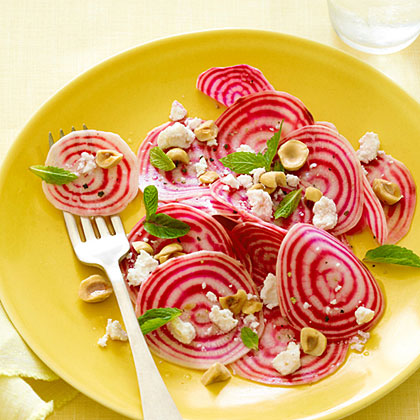
Ingredients:
¼ cup lemon juice
¼ cup hazelnut or olive oil
½ teaspoon salt
¼ teaspoon pepper
6 small Chioggia beets, peeled and sliced very thinly
½ cup crumbled ricotta salata or feta cheese
¼ cup torn mint leaves
½ cup roughly chopped toasted hazelnuts
Method:
Whisk together lemon juice, oil, salt, and pepper in a large bowl. Add beets and toss to coat evenly. Sprinkle with remaining ingredients.
Adapted from https://www.myrecipes.com/recipe/chioggia-beet-salad
Rob’s Recipe of the Week: Spring pasta
This recipe should be quite simple and adaptable to a range of the veg coming over the next month or two, so hopefully it’ll come in useful!
Spring vegetable tagliatelle
Ingredients
450g mixed spring vegetables such as green beans, asparagus , broad beans and peas
400g tagliatelle
1 lemon
1 tbsp Dijon mustard
1 tbsp olive oil
3 tbsp snipped chives
grated parmesan (or vegetarian alternative), to serve
Method
Halve the green beans and cut the asparagus into 3 pieces on the diagonal. Cook the tagliatelle, adding the vegetables for the final 5 mins of the cooking time.
Meanwhile, grate the zest from half the lemon and squeeze the juice from the whole lemon. Put juice in a small pan with the mustard, olive oil and a little black pepper. Warm through until smooth.
Drain the pasta and veg, adding 4 tbsp of the water to the lemon sauce. Return the pasta to the pan, reheat the sauce, adding most of the chives, then add to the pasta, tossing everything together well. Divide between 4 shallow bowls and top each with black pepper, Parmesan and the remaining chives.
From: https://www.bbcgoodfood.com/recipes/spring-vegetable-tagliatelle-lemon-chive-sauce
2021: May news – Sunshine and Showers
This week the steering group finally got to meet for the first time since last June. We enjoyed a farm tour together led by Stephen before our monthly meeting to uphold the vision and development of Canalside – it was great to meet face to face outside after many months on zoom!
May is feeling more like April with sunshine and showers so we’ve been able to make some progress in the fields. And with the increase in warmth we’ve seen some real growth in the plants, especially in the tunnels – even the most raggedy looking tomatoes are now filling out.
But to be honest, the most exciting news of the week is the arrival of our new trolley – after years of keeping homemade equipment going we decided to make small investments around the farm that will make things run smoother. We can now easily transport plants and harvested crops around the site without the wheels falling off!
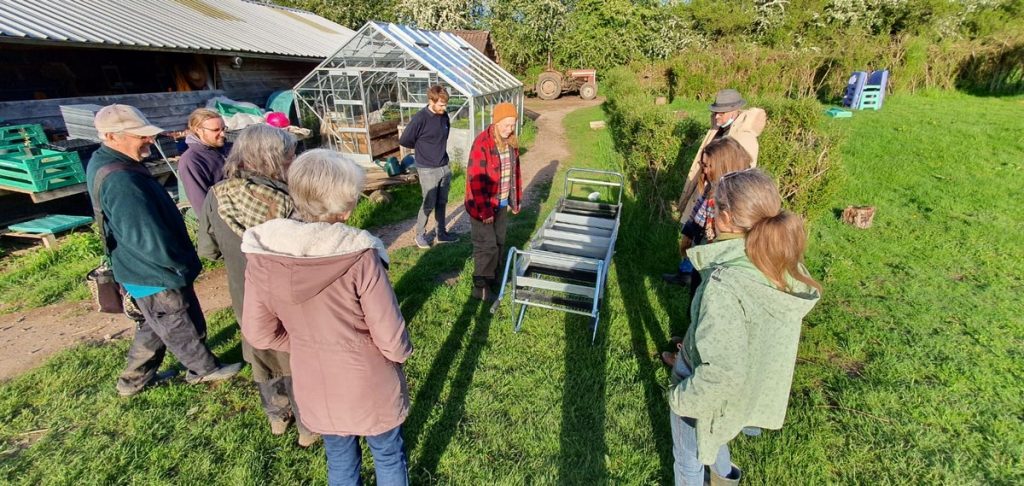
Eleanor, on behalf of the growing team
Photos: Tom Ingall
Rebecca’s Recipe of the Week: Beetroot, Lentils, Cheddar
Beetroot with feta, or goat cheese, is a classic combination, but other cheeses are available. Cheddar, for instance. Lentils add bite and substance to this salad, and the mustard brings a complementary zing that combines well with the cheddar. You can use either red or yellow beetroot in this salad, which makes a good lunch or simple supper.
Beet and Lentil Salad With Cheddar
Serves 4
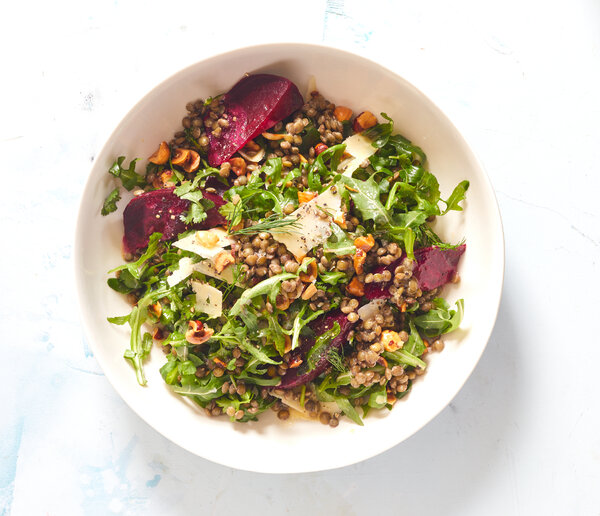
Ingredients
For the salad:
500g beetroot
300g green lentils, rinsed
1 garlic clove, smashed
1 teaspoon salt
approx. 2 cups rocket or another green such as shredded Swiss chard
5g dill, parsley, mint or coriander, roughly chopped
50g Cheddar, roughly crumbled
handful walnuts or hazelnuts, toasted in a dry frying pan for a few minutes
For the apple cider vinaigrette:
1 small garlic clove, grated
2 tablespoons apple cider vinegar
3 tablespoons extra-virgin olive oil
1 tablespoon maple syrup or brown sugar
½ teaspoon Dijon mustard
¼ teaspoon salt
several grinds of freshly ground pepper
Preparation
Place the beetroot in a microwave-proof bowl. Add 1 cup water to the bowl and cover the bowl tightly with clingfilm. Microwave for 20 minutes. By now the clingfilm should have collapsed tightly onto the beetroot, creating a sort of vacuum-seal. With your finger prod the beetroot through the clingfilm to see how soft it is. If it feels tender, the beetroot is done. If not, put it in for another 5 minutes and test it again. Keep going until the beetroot feels tender. Once it’s done, remove it from the microwave, peel back the clingfilm, drain, and set aside.
Meanwhile, cook the lentils: in a medium pot, add the lentils, salt, garlic and 1 litre of water. Bring to a boil over high. Reduce heat to medium, cover and simmer for 20 to 25 minutes until just tender. (The lentils should still have some bite). Drain in a colander and stir to break up and evenly distribute the garlic. Let the lentils cool slightly.
Once the beetroot is cool enough to handle, set about peeling it. The peel should come off fairly easily with a knife. Cut the beetroot into 1cm cubes, or slice into small wedges.
While the lentils cook, prepare the vinaigrette: in a large serving bowl, whisk the garlic, vinegar, oil, maple syrup and mustard with the salt and pepper. Add the warm lentils to the serving bowl, then add the beets, greens, nuts and herbs. Toss together and then stir in the the cheese. Don’t stir too vigorously, because you don’t want the cheese to turn crimson from the beets, and serve.
Recipe adapted from Hetty McKinnon, New York Times Cooking
